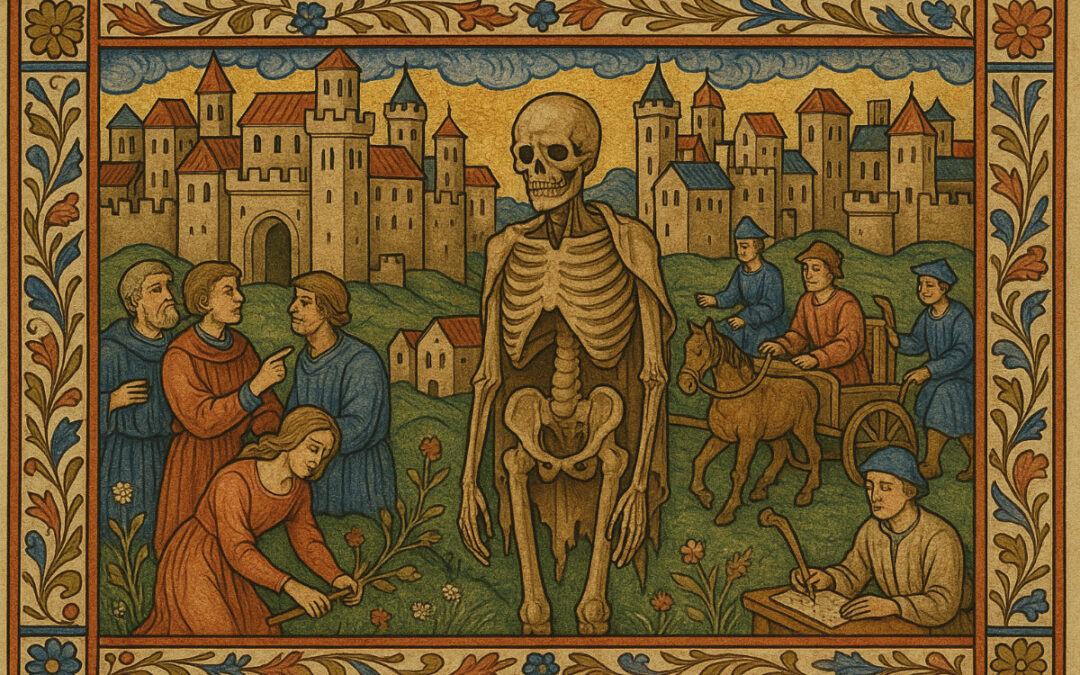A Case for critical Self-Examination
What if the very framework you use to understand your identity is limiting your ability to see clearly? What if the stories that give your group meaning are also trapping you in cycles of reaction and defensiveness?
Consider this possibility: every group that has ever existed believes its experience is unique and its suffering exceptional. Yet when we step back and look at the broader sweep of human history, we see the same patterns repeating across cultures and centuries—displacement, persecution, survival, and the narratives groups build around these experiences.
The Pattern of Claimed Uniqueness
Throughout history, countless peoples have faced persecution and displacement. Armenians, Indigenous Americans, Roma, various African populations, religious minorities—the list goes on. Each group’s suffering was real and devastating. But here’s what’s worth questioning: Is your group’s experience actually categorically different from these others, or have you simply organized your understanding around a particular narrative framework?
The claim of unique persecution often serves purposes beyond historical accuracy. It creates group solidarity, establishes moral authority, and provides justification for present-day actions. But these same functions can make it difficult to see when the framework itself becomes problematic.
When Protection Becomes Prison: The Enemy Within
Identity frameworks designed to protect can evolve into systems that consume what they’re meant to preserve. When your group’s survival becomes dependent on perpetuating a false or distorted identity, something far more insidious than external persecution emerges: internal rot.
The “Enemy Within” isn’t dissent or questioning—it’s the slow consumption of authentic culture by the artificial construct meant to protect it. This manifests as:
Performative authenticity: Members perform an increasingly hollow version of their identity rather than living it genuinely. The culture becomes theatrical, with people acting out roles rather than embodying real values and traditions.
Moral decay: The gap between proclaimed values and actual behavior widens. The group justifies actions that contradict its stated principles because the protective framework has become more important than authentic moral reasoning.
Spiritual emptiness: The rich inner life of the culture—its meaning-making capacity, wisdom traditions, and genuine spiritual practices—gets replaced by defensive posturing and victimhood narratives.
Intergenerational corruption: Children inherit not living culture but a brittle shell of grievances and justifications. They learn to perform identity rather than embody it, creating a generation that has form without substance.
This internal decomposition is more dangerous than any external enemy because it’s invisible and self-perpetuating. The society rots from within while its protective shell remains intact, creating the illusion of cultural preservation while the authentic culture dies.
The Mirror Test
Here’s a simple test: Can you honestly apply the same standards to your group that you apply to others? If another group used identical reasoning to justify identical actions, would you find their logic compelling? If your group’s historical suffering justifies behaviors that you wouldn’t accept from others, you may be trapped in tribal logic rather than operating from universal principles.
The Cost of Protective Thinking
Believing your group’s experience requires absolute ideological unity comes with devastating hidden costs:
- Cultural impoverishment: Rich heritage gets reduced to a single survival narrative
- Internal policing: Members monitor each other for ideological purity rather than celebrating diversity of thought
- Reactive dependency: Group identity becomes dependent on external threats, creating perverse incentives to maintain conflict
- Loss of moral agency: The group becomes trapped in reactive patterns, unable to choose its future
- Autoimmune destruction: The protective mechanism begins attacking the culture’s own capacity for growth and self-reflection
The culture meant to be preserved gets consumed by the preservation mechanism itself. What survives isn’t living culture but a defensive shell that has eliminated everything that made the original worth protecting.
A Path Forward
Questioning these frameworks doesn’t mean abandoning your heritage or minimizing real historical suffering. Instead, it opens space for a more authentic relationship with your identity—one based on the full complexity of your culture rather than a simplified narrative of unique victimization.
True strength comes not from claiming exceptional suffering, but from the universal human capacity for resilience, creativity, and moral growth. Your group’s real contributions to the world likely extend far beyond its survival story.
The Freedom to Choose
The most radical act may be to step outside the tribal framework entirely and ask: Who might you become if your identity wasn’t organized primarily around historical grievance? What aspects of your heritage have been overlooked in service of the survival narrative?
You have the freedom to choose which stories define you. The question is whether you’re ready to exercise it.
The frameworks meant to protect your identity may be the very things preventing you from fully inhabiting it. Sometimes the most loving thing you can do for your community is to help it see beyond the stories that trap it in cycles of internal destruction.
The ultimate irony: the only real threat to your culture’s survival may be the protective framework itself. By creating the Enemy Within, it ensures that the culture will either destroy its own capacity for independent thought or be destroyed by the contradictions it cannot resolve.
True cultural preservation requires the courage to question the very mechanisms that claim to offer protection.True cultural preservation requires the courage to question the very mechanisms that claim to offer protection.
